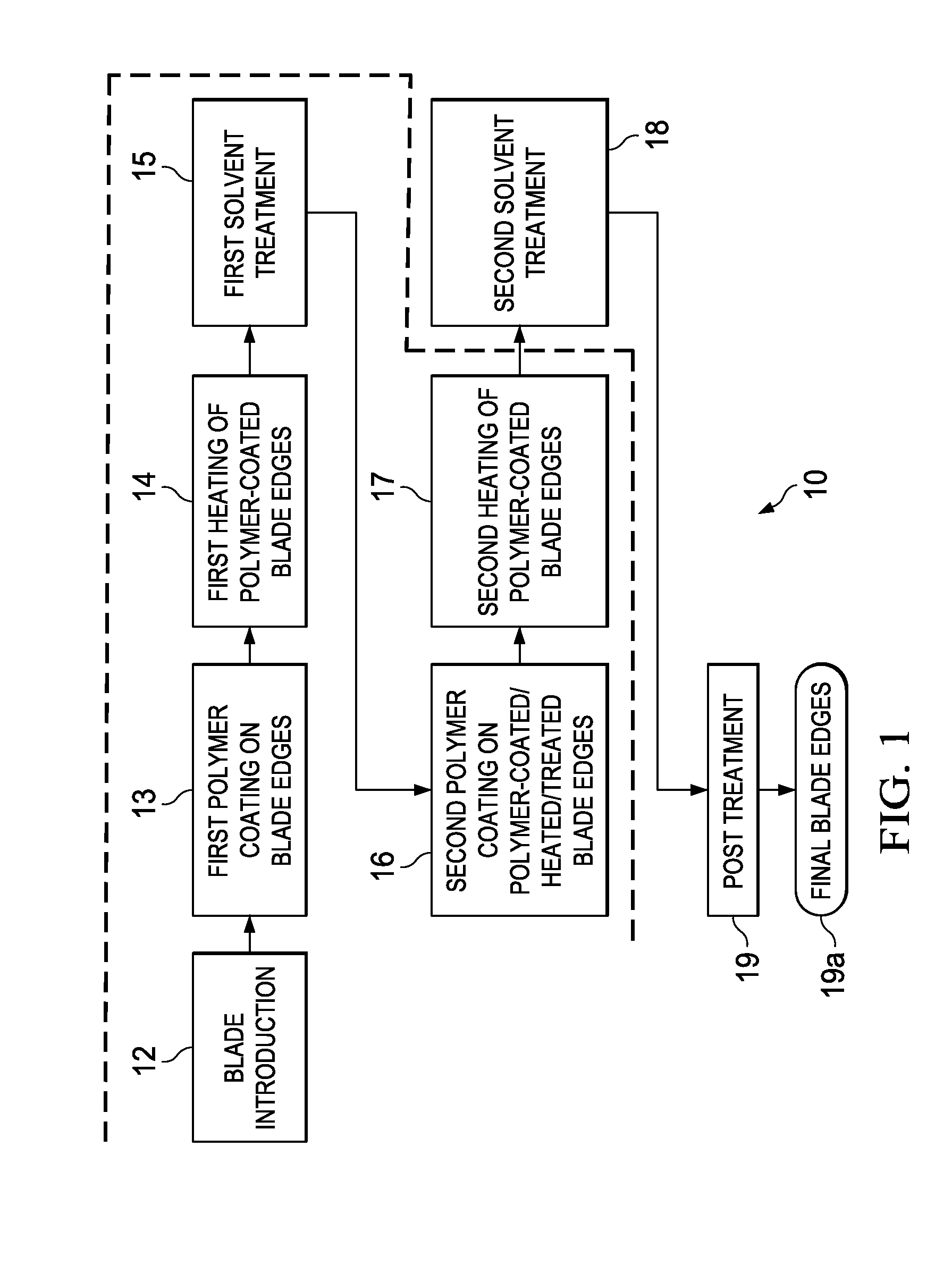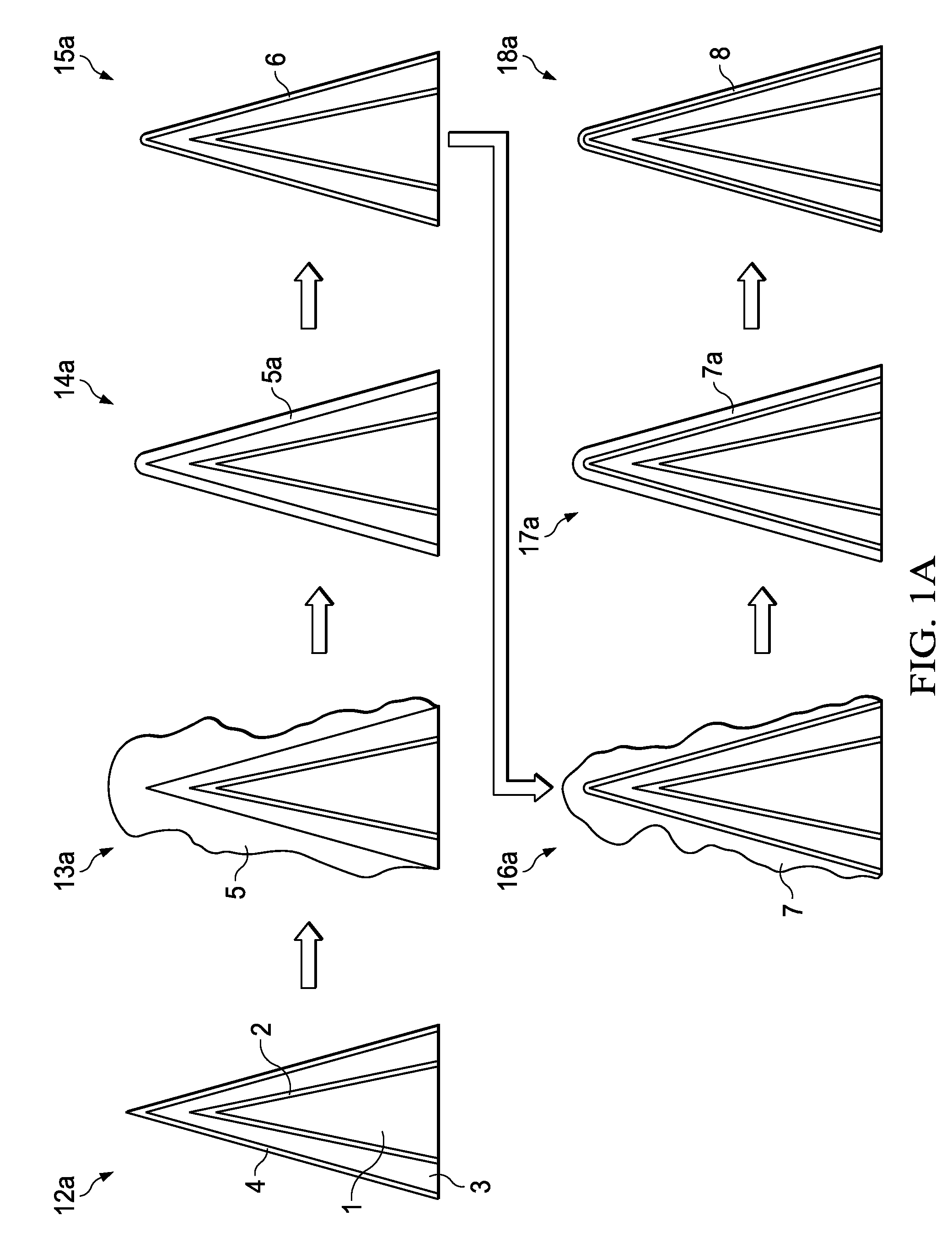Method of treating razor blade cutting edges
a polyfluorocarbon coating and razor blade technology, applied in the direction of pretreatment surfaces, coatings, metal working apparatuses, etc., can solve the problems of excessive discomfort and pain of uncoated razor blades, inability to use them for shaving a dry beard without excessive discomfort and pain, and irritation produced by excessive pulling of these hairs for a considerable period of tim
- Summary
- Abstract
- Description
- Claims
- Application Information
AI Technical Summary
Benefits of technology
Problems solved by technology
Method used
Image
Examples
preparation example
Blade Preparation Example
[0089]A batch of blades was spray coated, heated, and solvent-treated, then re-spray coated, re-heated, and re-solvent-treated as follows:
[0090]1. A fixture holding the blades was set on a carrier.
[0091]The blade fixture was preheated to greater than about 212° F. and then sprayed with a PTFE / water dispersion at about 1% (w / w). The fixture then was passed through an oven greater than about 650° F. where the PTFE coating was heated to ensure adhesion to the blade edges. The blade edges were then solvent treated at greater than about 500° F. for at least about 1 minute at a pressure at or above about 60 PSI in perfluoroperhydrophenanthrene.
[0092]2. Blade samples were collected.
[0093]A batch of blades as treated in step 1 was spray coated, heated, and solvent-treated under the same conditions described above, and additional samples were collected for assessment purposes.
Cutting Force Determination
[0094]To demonstrate the improvement in the first shave and subse...
PUM
 Login to View More
Login to View More Abstract
Description
Claims
Application Information
 Login to View More
Login to View More - R&D
- Intellectual Property
- Life Sciences
- Materials
- Tech Scout
- Unparalleled Data Quality
- Higher Quality Content
- 60% Fewer Hallucinations
Browse by: Latest US Patents, China's latest patents, Technical Efficacy Thesaurus, Application Domain, Technology Topic, Popular Technical Reports.
© 2025 PatSnap. All rights reserved.Legal|Privacy policy|Modern Slavery Act Transparency Statement|Sitemap|About US| Contact US: help@patsnap.com



